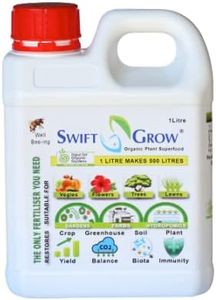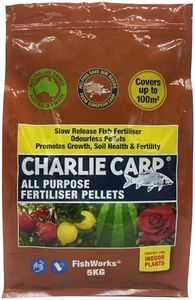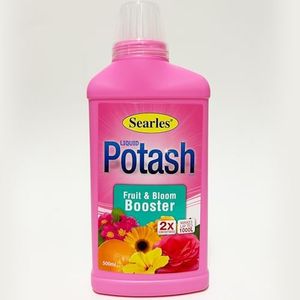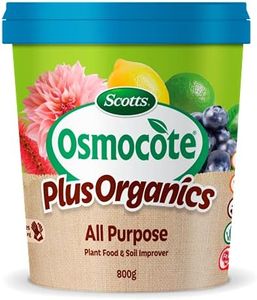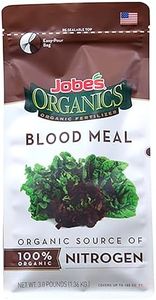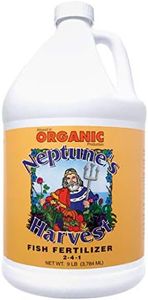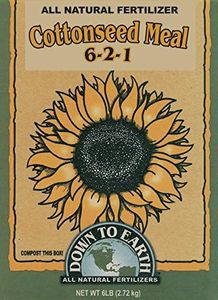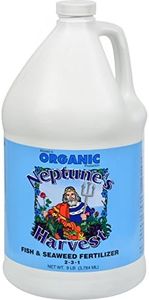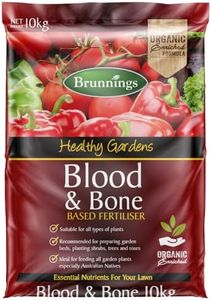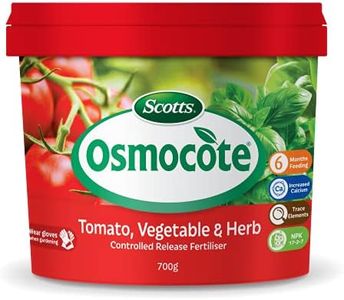We Use CookiesWe use cookies to enhance the security, performance,
functionality and for analytical and promotional activities. By continuing to browse this site you
are agreeing to our privacy policy
10 Best Vegetable Fertilizers
From leading brands and best sellers available on the web.Buying Guide for the Best Vegetable Fertilizers
When selecting a vegetable fertilizer, the goal is to provide your plants with the right balance of nutrients to grow healthy and productive. Fertilizers come in various forms and compositions, and choosing the correct one will depend on the type of vegetables you're growing, your soil condition, and your gardening style. Taking a bit of time to understand what plants need at different growth stages, as well as what your soil might already have or lack, will help you make the best choice.N-P-K RatioThe N-P-K ratio stands for Nitrogen (N), Phosphorus (P), and Potassium (K). These are the three primary nutrients that plants need for growth, root development, and overall health. The ratio on a fertilizer package (like 10-10-10) indicates the percentage of each nutrient. High-nitrogen fertilizers boost leafy growth, phosphorus supports root and fruit development, and potassium helps with general hardiness. If you want leafy vegetables, a higher nitrogen content is useful; for root veggies and fruiting plants, opt for higher phosphorus and potassium. Always consider what your specific vegetables need and try to match the ratio for the stage of growth or vegetable type.
Fertilizer Form (Granular vs. Liquid vs. Slow Release)Fertilizers come in granular, liquid, or slow-release forms. Granular fertilizers are applied to the soil and watered in, providing nutrients over time; they're good for steady feeding. Liquid fertilizers are mixed with water and provide a quick nutrient boost, so they're helpful if plants need fast help. Slow-release fertilizers break down over weeks or months, providing long-term nutrition without frequent applications. Choose the form that fits your gardening schedule: liquid for instant results, granular for regular feeding, or slow-release if you want low-maintenance care.
Organic vs. SyntheticFertilizers can be organic (made from natural materials like compost, manure, or plant waste) or synthetic (chemically manufactured). Organic fertilizers improve soil health and provide nutrients gradually, making them popular for long-term soil quality and eco-friendliness. Synthetic fertilizers deliver nutrients quickly and precisely, which is helpful for immediate results or correcting deficiencies. Consider whether you want a more natural approach, which is slower but gentle on soil life, or need a quick fix, which is often synthetic.
Micronutrients and AdditivesIn addition to the main N-P-K nutrients, some fertilizers include essential micronutrients like calcium, magnesium, iron, and trace elements. These help prevent minor deficiencies that can stunt plant growth or cause discolored leaves. If your soil is already rich but your plants show specific problems, choose a fertilizer with added micronutrients. If your soil test shows balance, a basic fertilizer should suffice. Match your selection to any known deficiencies or general need for boosting plant resilience.
Application MethodDifferent fertilizers are designed for various application methods: some are mixed into the soil before planting, others are sprinkled around growing plants, and some can be sprayed on leaves. Read the label for usage instructions and match the method to your gardening routine. If you prefer set-and-forget options, choose pre-plant or slow-release types, while liquid or foliar feeds are more hands-on and frequent but can save struggling plants quickly.

